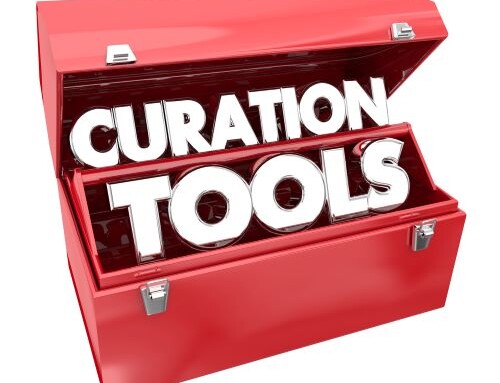Top performing organizations have one thing in common: They recognize the value of their employees and are always looking for creative ways to keep them motivated (and productive.) Non-cash incentives such as travel is the leading motivator, especially for customer-facing positions such as in sales or support.
If your organization has been considering a travel incentive program there is some significant value. And if you’re concerned about possible drawbacks, these can be avoided with proper planning.
ADVANTAGES
Increased Productivity
Travel incentive programs do a fantastic job of boosting productivity. A good travel incentive can increase productivity by 18%!1 Furthermore, research conducted by the Incentive Travel Council and the Site International Foundation found that more than 95% of employees believe they are more motivated by travel incentives than higher pay levels.2 In fact, travel is the most preferred award for high-producing employees.3 If you’re looking to boost your productivity, travel incentives are an incredibly effective means of doing so.
Increased Sales Objectives
Travel incentive programs also help you sell more of a specific product or service, letting you reward top salespeople. Travel is also a great way to reward those who gain new customers or bring in revenue from existing clients. But regardless of whether you want to think in terms of sales objectives, the fact remains that a well-crafted travel incentive program can produce a 112% ROI.4 Travel incentives are more than worth the cost.
Improved Morale
In addition to travel incentives’ benefits to productivity and sales objectives, these programs also boost group morale. A unique travel opportunity gives your employees something to be excited about, and that excitement only increases over time. Employees feel better about their workplace when they know their efforts can be rewarded with a genuinely appealing prize.
Improved Loyalty
Research shows that 72% of people who earn a travel reward feel increased loyalty to their company,5 and this makes sense. Employers utilizing travel incentive programs show that they want to reward their employees with something unique, memorable, and enjoyable. Companies that do this are more likely to retain employees than companies that pay the same but don’t make use of travel incentives.
ELIMINATATING THE DRAWBACKS
Lack of Budget
This is one of the most frequent objections to travel incentive programs. However, a small budget doesn’t mean you can’t pull off an incentive program—it just means you need to use your budget wiser through negotiations, bundling as well as selecting a destination that stretch your dollar further. Supplier negotiation combined with bundling can result in significant savings, if you have the right relationships and know what services work best when bundled. Additionally, destinations need not be expensive to result in motivating employees, improving productivity and creating long-term change. Beautiful destinations where the costs associated in getting there as well as staying there exist and it is often a matter of ferreting them out.
Difficulty in Selecting a Destination Suitable For All Winners
Selecting the right destination is important, but also difficult. Much depends on your audience which is why it is important to determine destination in conjunction with what will appeal to your audience. Those in finance may require more razzle and dazzle where those in support, warehouse or production lines may find travel to an exotic location more than enough. Additionally, understanding that every minute of a trip doesn’t require activities can work to your advantage and stretch your budget further. Selecting a few activities such a day trip or tour, an evening of entertainment, etc. that truly provide a memorable experience, combined with some free time to explore can also result in a pleasurable outcome.
Taking Key Salespeople Out of the Field
One criticism of travel incentive programs is that they take top salespeople out of the field, thus hurting the overall numbers for the month of the trip. While this is a fair concern, there are ways of addressing it. If possible, don’t schedule the trip during a peak time such as end of the month, end of the year or during seasonable buying. Another way is to ensure that at least part of the trip falls on the weekend. Or, as another consideration, choose carefully when you’re deciding on open- vs. closed-ended criteria for winning. Open-ended programs allow any and every person who meets the qualifying criteria to win, while closed-ended programs only allow a specific number of winners. If you don’t want to risk removing a large number of people from the office, a closed-ended program might be a better option.
Conclusion
It’s no secret that travel incentives can help organizations achieve long-term results while motivating employees. There are many advantages to travel and you can minimize the drawbacks with proper planning.
Are you considering a travel incentive program? Contact Gavel International to help plan a program that maximizes your budget and results in raving reviews from attendees.
1 http://theirf.org/research/measuring-the-roi-of-sales-incentive-programs/175/
2 http://www.businessinsider.com/paid-vacation-motivates-better-than-cash-2013-11
3 Ibid.
4 http://theirf.org/research/measuring-the-roi-of-sales-incentive-programs/175/
5http://www.businessinsider.com/paid-vacation-motivates-better-than-cash-2013-11
This article was last updated on November 28, 2022
- Sample a Diverse Selection of Global Cuisine in Toronto, Canada - December 9, 2024
- Prevent Affirmation Overload and Approval-Seeking Behavior in the Workplace - December 2, 2024
- Prevent People-Pleasing from Interfering with Your Teamwork - November 4, 2024






